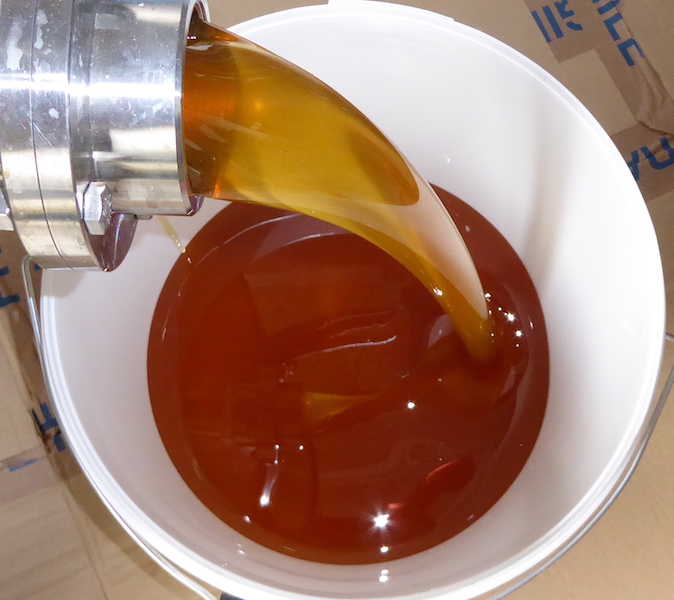Harvesting times differ according to what honey you want. If you want a specific plant’s honey, you need to harvest right at the end of this plant’s blossoming. However, if you want a multi-plant honey, you have to wait until the end of the last blossoming, which usually occurs mid-October.
There is no one-fits-all method to harvesting, it depends on the size of your apiary. The first step of the harvest, regardless of its size, is to go to your apiary with empty supers. It is essential to also remember not to over-use your smoker, as your honey might get a unpleasant smell.
Small apiary
1- Take each frame out ,one by one, and brush the bees back inside the hive.
2- Check that the wax cells are capped, then proceed to place it in the
empty supers you brought with you. Always be very careful not to bump
your frame on the size of the supers as even the smallest hit will break
open the wax cells and your honey will start pouring out of the frames.
3- When you finished transferring the frames in the empty super you
brought, you can close the hive and use the now-empty super to repeat
the process with the next hive.
4- Once you have collected all the honey-filled frames, you can bring your supers in your truck.
Medium apiary
1- Place a bee-escape (between the hive and the supers) in each hive of your apiary.
2- The next day, all bees will be in the hive and not the supers, you
can therefore come and collect them faster than if you had to brush and
shift each frames to a new super. The only downside to this method is
that you need to come twice to each apiary, but the process itself is
much faster.
Large Apiary
1- For large-scale apiaries, beekeeper use a bee blower to remove
bees from supers, without neglecting the honey’s quality. To do so, you
need to remove the supers from the hive and blow the bees away between
each frame.
2- Extra-large scale beekeeper also may use a crane to collect and move the supers.

